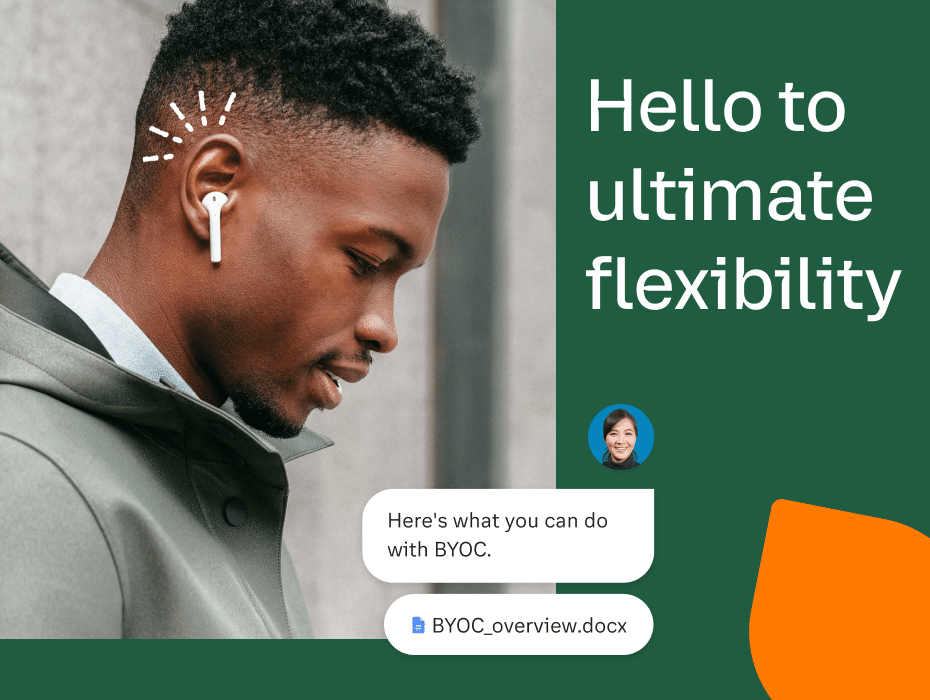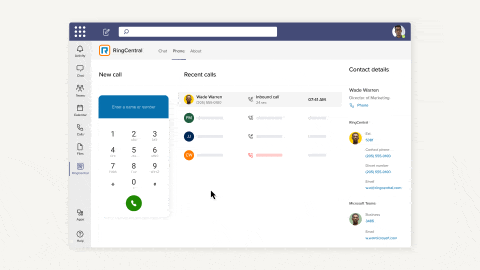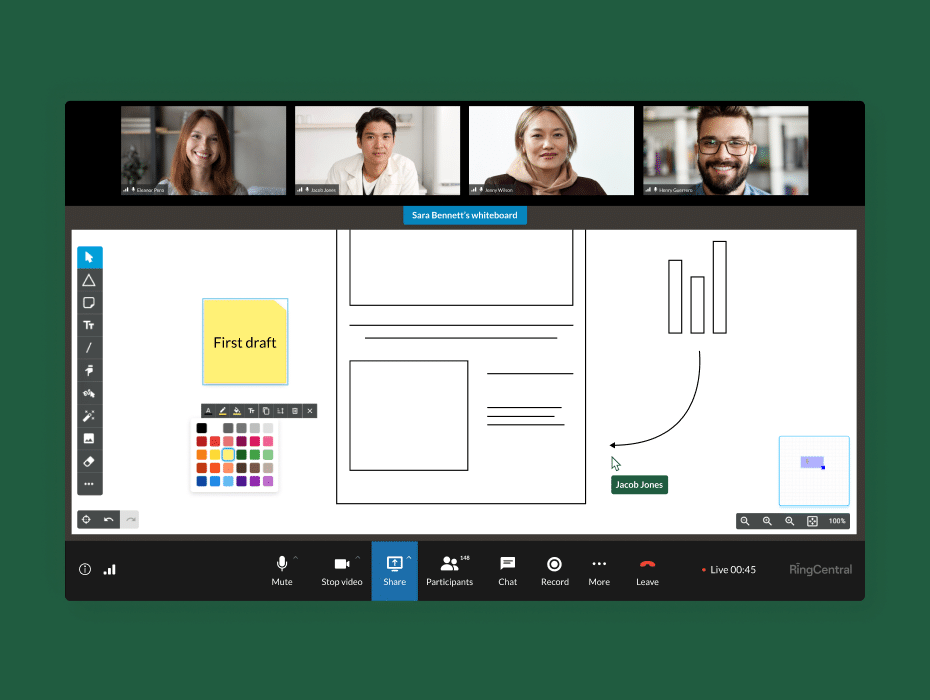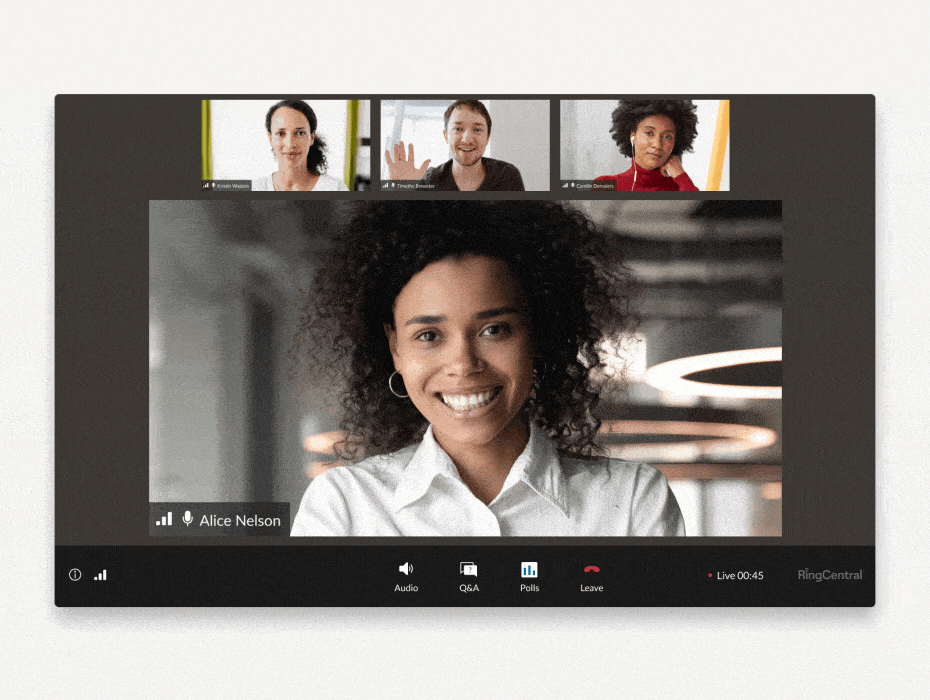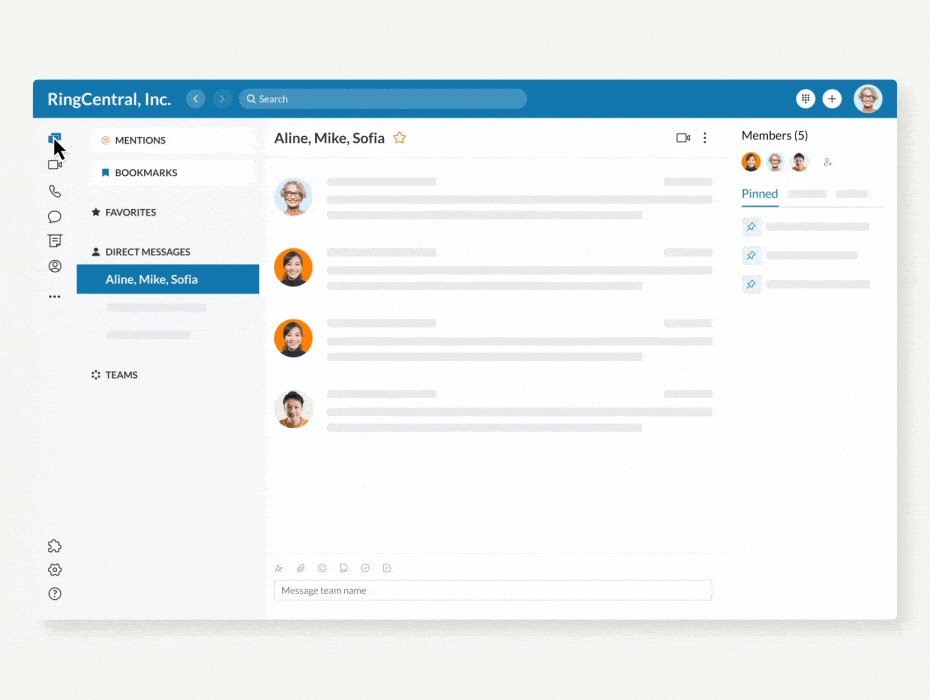At a glance:
- Enhanced solutions for Microsoft Teams customers
- Bring Your Own Carrier (BYOC)
- Meeting global compliance requirements
- A much simpler way to manage your RingCentral accounts
The last 2 years have marked a big leap forward for remote and hybrid work—but they’re also forcing organizations to completely rethink how to support their teams.
Take communications, for example. Remote and hybrid employees need the ability to work together from anywhere, using any method of communication that best suits their needs. That means having access to messaging, video, and phone—and the freedom to work their way.
As a result, companies want to move their communications to the cloud.
But moving to the cloud comes with its own challenges. Many organizations have existing communications systems and already work with preferred providers that pre-date this workplace transformation. For those companies, starting from scratch may not be preferable (or even possible).
At RingCentral, we’re dedicated to making it easier to work your way. That includes giving your organization more ways to move to the cloud—without any disruptions to your current service.
Here’s a look at what’s coming:
1. Enhanced solutions for Microsoft Teams customers
Currently, businesses that use Microsoft Teams have two ways to integrate with RingCentral:
- An embedded dialer integration between the RingCentral app and Microsoft Teams
- A direct routing solution to power Microsoft Teams calling natively.
We’re excited to announce that Microsoft Teams users will soon have access to more advanced PBX capabilities, along with RingCentral’s enterprise-grade reliability and compliance. Here’s what’s coming:
Business SMS, fax, voicemail, and call-to-web
Microsoft Teams users that also want RingCentral’s advanced cloud PBX features will soon have more functions than just embedded calling. Through the Microsoft Teams interface, they’ll have access to:
- SMS (Q1 2022—US only)
- Fax (Q1 2022)
- Call-to-web (Q4 2021)
- Voicemail (Q4 2021)
So what will this look like? In a nutshell, Microsoft Teams users will have embedded controls for business SMS, fax, voicemail, along with the existing embedded dialer, all of which use RingCentral as the phone carrier.

This means users can access their RingCentral voicemails and respond to SMS messages without ever leaving the Teams app. Making and receiving calls, sending SMS texts, and reviewing voicemails can all be done natively in Teams.
There’s more than just phone features. Users also benefit from our enterprise-grade PBX analytics and reporting, 99.999% uptime SLA, and unparalleled security and trust.
Learn more about the RingCentral embedded dialer here.
Enhanced direct routing for Microsoft Teams
Many Microsoft Teams users might want a deeper native experience with their RingCentral calling features. There’s where direct routing comes in.
Our enhanced direct routing solution provides closer ties to RingCentral’s cloud PBX infrastructure and greatly benefits admins, who will have a much simpler onboarding experience through a tighter, more automated administration workflow.
RingCentral is also now offering a new complementary add-in for direct routing customers to provide business SMS and fax capabilities—features not available in Microsoft Teams.
Learn more about RingCentral direct routing here.
2. Frictionless cloud migration with Bring-Your-Own-Carrier (BYOC)
Great rates, years of reliable service—there are lots of reasons you may be happy with your existing telecom carrier; and for those in a long-term relationship with their phone provider, the idea of switching to all cloud right now may be a dealbreaker.
But we’re giving organizations a new way to transition to cloud communications, without saying goodbye to their existing telecom carrier.

Bring-Your-Own-Carrier (BYOC) allows customers to connect their existing or preferred telecom carrier(s) into the RingCentral cloud.
With BYOC, users have access to our rich collaboration tools, including team messaging, task management, unlimited cloud storage, picture annotations, video meetings, virtual backgrounds, meeting transcriptions, closed captions and more. And they can use RingCentral while retaining existing telecom carrier relationships, providing more flexibility in their cloud migration journey.
BYOC will be available in Q4 2021 with any SIP trunk capable gateway. It’s also certified by industry leading SBC vendors such as AudioCodes and Ribbon Communications.
Stay informed with RingCentral
3. Peace of mind that RingCentral meets unique user needs and global compliance requirements
With all that’s happened in recent years, we know that the health and safety of your employees is a top priority. We also know that your company has to meet regulatory compliance requirements with your communications.

That’s why our RingCentral delivers enhanced location accuracy and caller ID on E911 calls for every user in the US. In addition, we make managing corporate emergency response locations easy for administrators via the Trust Center, on top of allowing end users to define and manage their own emergency response locations.
Learn more about how we meet your global compliance needs here.
Learn more about RingCentral’s Nomadic E911 here.
4. A much simpler way to manage your RingCentral accounts
Although the massive shifts we’re seeing are ultimately a move towards making work better, the resulting need for new cloud-based tools may increase the volume and complexity of work for IT admins.
But making hybrid work a success for everyone means also being responsive to the needs of IT teams, including improving the ease and flexibility of how cloud solutions are provisioned. That’s why we’re continuing to improve the flexibility of our system to help administrators meet their users’ needs.

Earlier this year, we gave administrators the ability to add RingCentral Video Pro™ and Video Pro+™ users to their MVP® accounts, making it easier for them to empower their users with the right RingCentral solution for their needs.
Now, we’re enhancing the administrative experience even further with a simple and intuitive way to manage user licenses. Via the admin portal, administrators can quickly view user license types, and initiate quick upgrades and downgrades as needed.
Available for U.S. users only, this new capability helps administrators consolidate vendors, mitigate shadow IT, and deliver better product-user fit—right across their organizations.
We’re all about options
Switching communications is a big move for companies—especially those who already have their preferred carriers and systems. By giving you more flexibility with your unified communications, we bring together the best of RingCentral, Microsoft Teams, and the phone carrier of your choice.
Updated Mar 13, 2025








